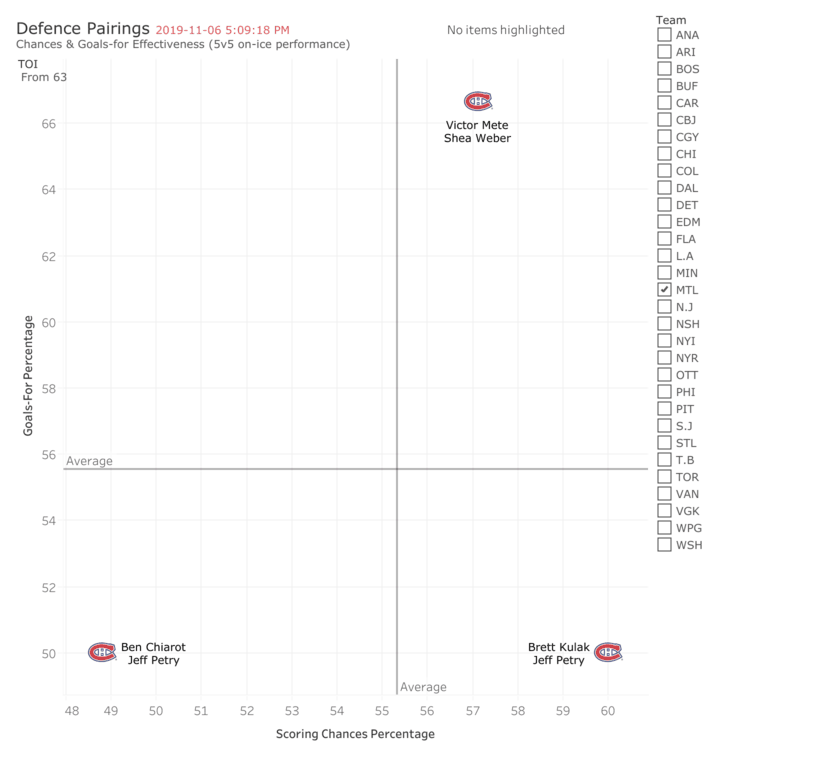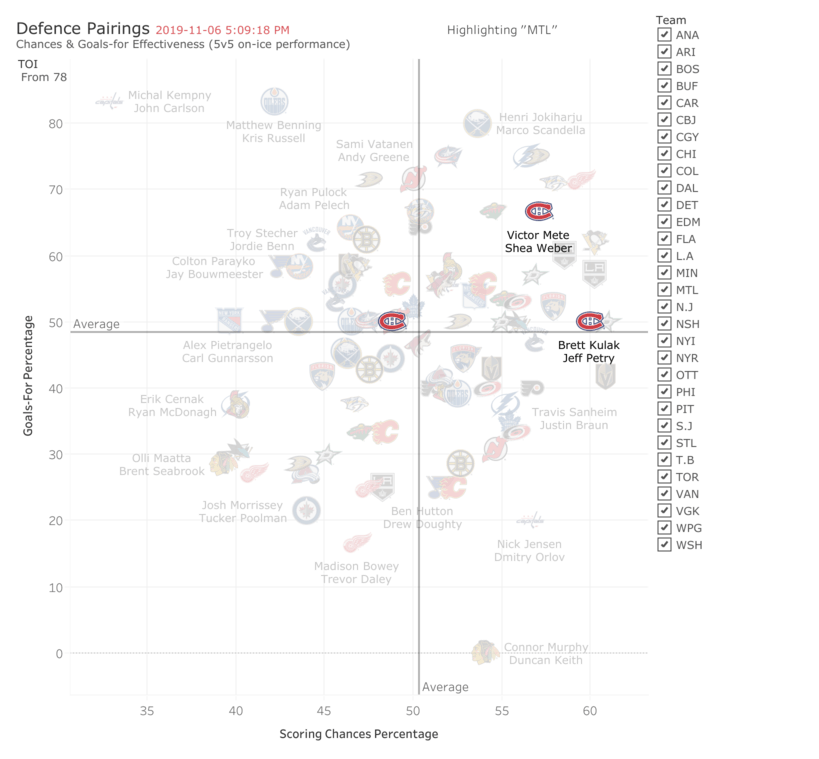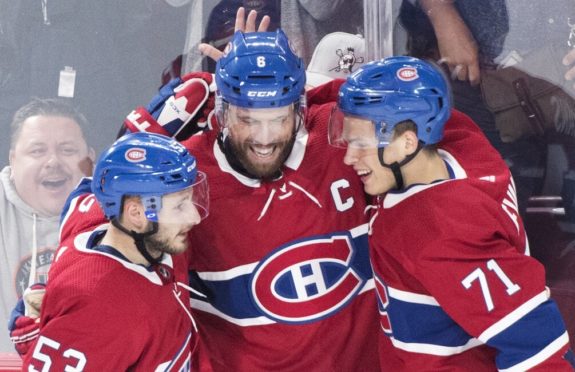Recently, I noticed some seemingly odd behaviour by Shea Weber. The big Montreal Canadiens defenceman was behind the opponent’s net late in a game with a point on the line against the Vegas Golden Knights. It’s strange to see him so deep in the offensive end in any game situation, let alone late in a game with a point is on the line. Weber did this again this week against the Boston Bruins at a peculiar time in the game. I also noticed several zone exits go wrong off the stick of Weber. So, I wanted to dig into the numbers to see whether my negative impressions of some of his play would be reflected in the numbers.
Five-on-Five Team Play
We’ll start assessing the team’s play by using the VERSUS tool to compare the Canadiens’ performance relative to the rest of the league. The blue bar indicates league rank; the longer the bar the better the team is performing in that category compared to all other NHL teams. The data at the beginning of the bar is the raw data for the category.

On the left side of the graphic is last season’s data for reference. You can quickly see that the Canadiens are doing better at five-on-five this season, which is pretty impressive, considering they were among the best in this category last season. The five-on-five offence is near the very top of the NHL and the defence has been good and getting better as indicated by the last 10 games yellow indicator, with the finger-point emoji pointing to the last 10 goals-against ranking, where the Canadiens are edging towards the league’s top rank.
Now that we have established that the Canadiens are one of the best five-on-five teams in the NHL, let’s take a closer look at the defence pairings.
Canadiens’ Top Pairings
The top pairings at five-on-five are Weber and Victor Mete (194 mins together), Jeff Petry and Ben Chairot (133 mins), and Petry and Brett Kulak (79 mins).
The graph below plots the pairing’s performance on a quadrant grid with goals-for percentage on the Y axis and scoring chances-for percentage in the X axis. Generally speaking, a good percentage rating is over 50%. Anything under 50% means the other team has a greater percentage of goals-for and chances-for while the pair is on the ice.

The Weber/Mete pairing has impressive five-on-five numbers with over 57% of the scoring chances and over 66% of the goals scored percentage. Petry, with Chairot or Kulak, has a 50% goals scoring percentage; the big difference is that the Petry/Kulak pairing has a much greater share of scoring chances at 60%.
Canadiens’ Pair Among the NHL’s Elite
These numbers look good, right? And they should, knowing that the Canadiens are one of the best five-on-five teams in the league. But how do they compare to other pairings in the NHL? The image below shows the Canadiens’ top pairings relative to the NHL’s other top pairs. The best performances are over 50% in scoring share; ideally in the top right quadrant of this graph.

It’s easy to see that all the Canadiens’ pairings are doing very well relative to the rest of the league, and that the Weber/Mete pairing is one of the best five-on-five duos in the NHL. Many of the pairings with a better goal scoring percentage also do not have as much time together as Weber and Mete. The exception being Ryan Ellis and Roman Josi. Based on this data, I would say that, statistically, the Nashville Predators’ top pairing is the only one performing better than Weber and Mete.
The last takeaway from this chart is that the Petry/Kulak pairing tilts the ice in their team’s favour (60% scoring chances percentage) as well as any pairing in the league. The sample size is not enormous (less than 80 mins together five-on-five), but head coach Claude Julien may want to put these players together more often.
The Danault Line Influence
Now, before we get too crazy attaching cause and effect with these findings, we need to always consider context. These numbers only tell part of the story. We must consider who the other three teammates are while these parings are on the ice, matchups, zone starts, injuries, and game context, among other things. For starters, I wonder how much the Phillip Danault line contributes to the overall defensive success of the team and, by association, the defencemen pairings? How much of the Weber and Mete success is attributable to the Danault line?

It’s really hard to say without watching the games and digging even deeper into the numbers — an endeavour I will leave for a future article. But if the numbers don’t tell the whole story, they at least point us in the right direction. It’s safe to say that even with the odd bad play, pointed-out by Twitter handles abound, the Canadiens’ defence, and more specifically, the Weber/Mete pairing are playing at an elite level during five-on-five. Now if they can just fix the special teams.